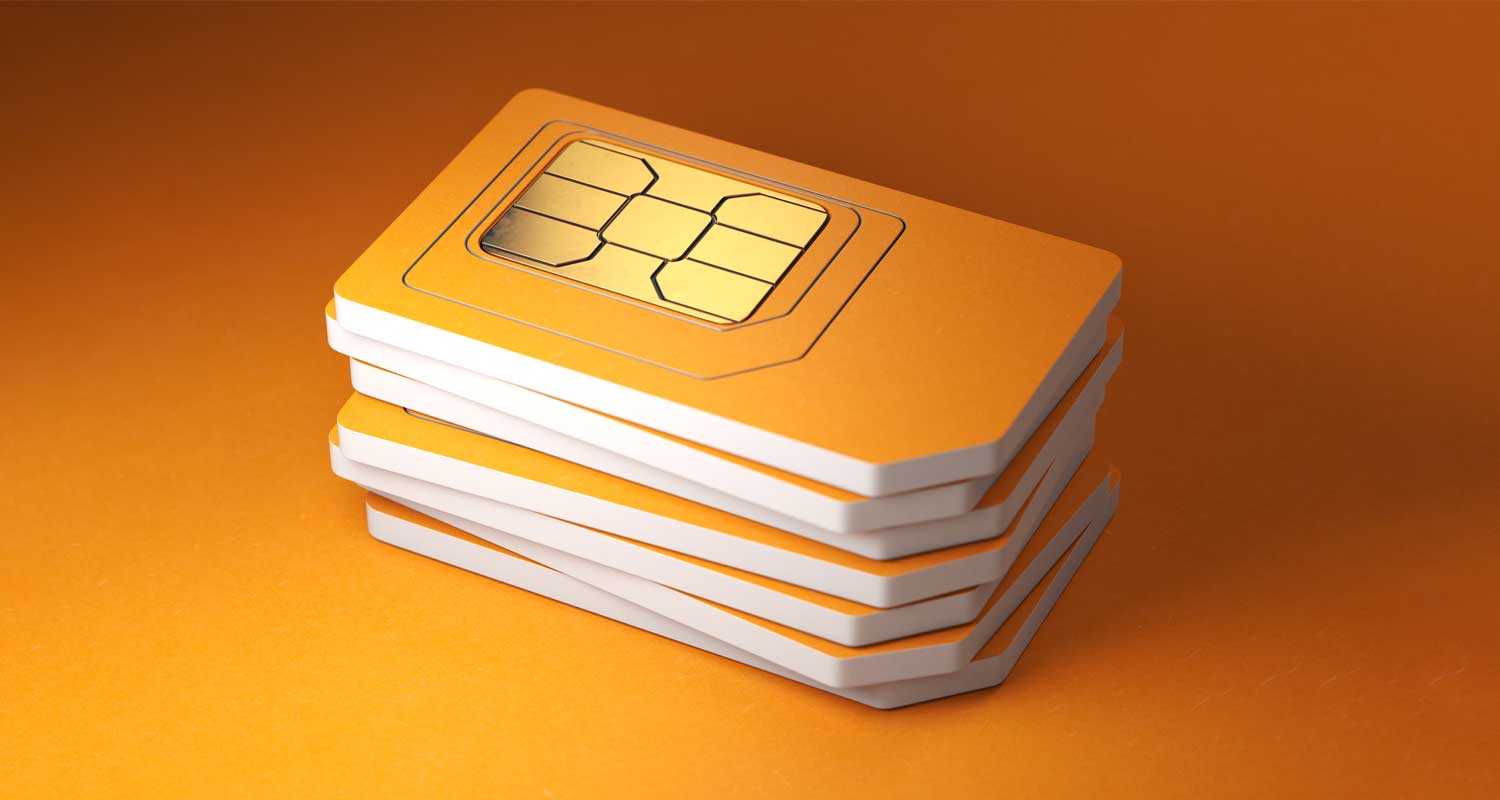South Africa’s cellular community operators produce an estimated 180 million Sim playing cards every year, round 3 times the nation’s inhabitants.
This determine – from a well-placed business supply – is because of excessive churn within the mass market, with pay as you go customers repeatedly switching between networks to benefit from pricing and particular presents. Many of those playing cards quickly up as waste, discarded within the veld or in landfill websites.
So, what are MTN, Vodacom, Telkom and Cell C doing to fight this drawback?
“We procure Sim playing cards relative to our market share based mostly on gross sales forecasts, subscriber development yr on yr and the variety of Sims registered by way of Rica and activated inside the pay as you go area,” Telkom spokesman Mooketsi Mocumi instructed TechCentral.
“Amongst different initiatives, the Sim packaging is biodegradable and we’ve lowered the Sim card measurement by half. All returned/unusable Sim playing cards are scrapped and destroyed in an environmentally pleasant method.”
Based on Mocumi, South Africa’s shopper market – and notably the casual market – is characterised by “washer churn”, the place customers regularly change their Sim playing cards on account of rotation among the many completely different networks, relying on which community they think about to supply one of the best worth on the time. This results in “dormant” Sims, that are ultimately disconnected for non-utilisation.
Poisonous substances
Sim playing cards contribute to e-waste in quite a lot of methods.
The primary is materials waste. The supplies that make up a Sim card embody plastic, metals reminiscent of copper and gold, and silicon – none of which is biodegradable. This implies disposing of Sim playing cards by way of landfill websites shouldn’t be sustainable because the Sims don’t break down naturally within the atmosphere.
Additionally, regardless of their comparatively small measurement, Sim playing cards comprise hint quantities of poisonous substances that may seep into the soil and contaminate water. The only-use packaging, often plastic, provides extra to a Sim card’s waste profile.
Learn: Strain on South Africa to introduce ‘proper to restore’ guidelines
Telkom, MTN, Vodacom and Cell C have all lowered the dimensions of their Sim playing cards in an effort to cut back the quantity of waste. Fashionable Sims can be clipped out to completely different sizes so one Sim matches completely different Sim tray slots for normal, micro and nano Sim sizes, for instance.
The unused portion of the Sim is, nevertheless, often disposed of instantly after opening. Based on Cell C spokeswoman Maxine Singaram, the cellular operator is attempting to get customers to maintain the unused supplies as an alternative of throwing them away.
 “Many purchasers retain the Sim casing for reference functions because it shows essential particulars like the decision centre quantity, USSD strings and the cellphone quantity. We additionally provide uncooked Sims that aren’t packaged into move wraps to cut back the packaging,” mentioned Singaram.
“Many purchasers retain the Sim casing for reference functions because it shows essential particulars like the decision centre quantity, USSD strings and the cellphone quantity. We additionally provide uncooked Sims that aren’t packaged into move wraps to cut back the packaging,” mentioned Singaram.
Of all of the cellular operators, solely Telkom was ready to disclose the variety of Sims it produced in its most up-to-date monetary yr: a staggering 43 million. MTN and Vodacom refused to expose their figures, citing competitor sensitivity. Based mostly on Telkom’s numbers, although, it’s cheap to imagine the determine for every firm is effectively north of 43 million a yr.
“Bodily/plastic Sim card demand is pushed by the completely different channels and companions in addition to Sim gross sales within the wholesale atmosphere. The business is working to optimise distribution,” mentioned Vodacom.
Cell C, then again, mentioned it produces lower than 20% of the Sim playing cards available in the market and is concentrated on managing efficiencies whereas assembly demand. Nevertheless, like MTN and Vodacom, it could additionally not say what number of Sims it produces yearly.
Embedded Sims – extra usually often known as eSims – are a digital type of a Sim card which may ultimately resolve the environmental drawback related to bodily Sim playing cards.
Telkom mentioned it has round 90 000 of its 20.4-million subscribers utilizing eSims. Vodacom, MTN and Cell C didn’t disclose what number of eSim prospects they every have on their networks, however throughout the board eSim adoption in South Africa is constrained by gadget penetration because the function is just out there on newer, costlier units.
Programmes
“Whereas we’re seeing vital eSim uptake in our branded shops and contract markets, the mass market depends closely on function telephones and fundamental smartphones, which aren’t but eSim suitable,” mentioned Cell C’s Singaram.
Each Vodacom and MTN mentioned they’ve programmes the place prospects can get rid of their Sim waste in environmentally pleasant methods, together with having the waste picked up from the consolation of their very own house. Each operators additionally drive consciousness programmes on the subject of e-waste. MTN mentioned it’s an energetic member of the producer duty organisation, Round Power.
“Via Vodacom’s Redlovesgreen programmes, Vodacom encourages prospects to undertake sustainable practices and to recycle responsibly. We’ve partnerships to advertise public consciousness of recycling factors nationwide,” mentioned Vodacom. – © 2024 NewsCentral Media